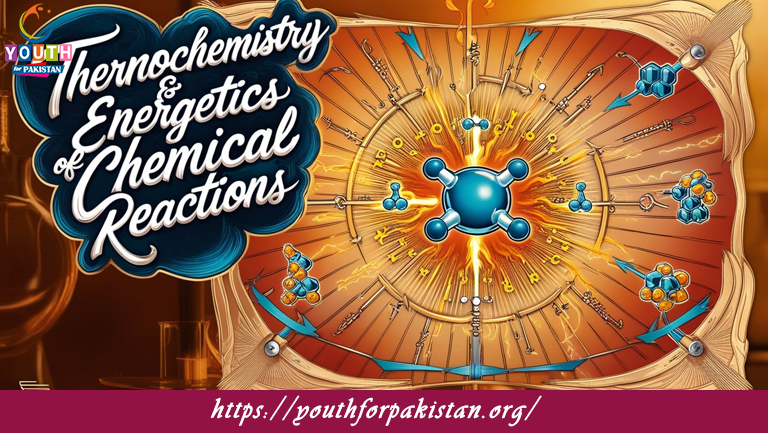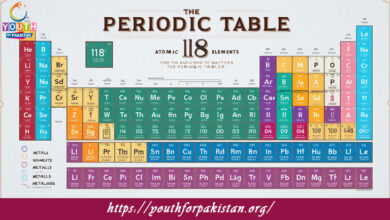Thermochemistry & Energetics Of Chemical Reactions MDCAT MCQs

Thermochemistry & Energetics Of Chemical Reactions MDCAT MCQs: Welcome to the Thermochemistry & Energetics Of Chemical Reactions MDCAT MCQs with Answers. In this post, we have shared Thermochemistry & Energetics Of Chemical Reactions Multiple Choice Questions and Answers for PMC MDCAT 2024. Each question in MDCAT Chemistry offers a chance to enhance your knowledge regarding Thermochemistry & Energetics Of Chemical Reactions MCQs in this MDCAT Online Test.
Thermochemistry & Energetics Of Chemical Reactions MDCAT MCQs
The heat of reaction at constant pressure is called:
a) Internal Energy
b) Enthalpy
c) Entropy
d) Gibbs Free Energy
The enthalpy change for the formation of one mole of a compound from its elements in their standard states is known as:
a) Enthalpy of Combustion
b) Enthalpy of Formation
c) Enthalpy of Reaction
d) Enthalpy of Solution
The heat released or absorbed during a chemical reaction at constant volume is called:
a) Enthalpy Change
b) Internal Energy Change
c) Heat Capacity
d) Activation Energy
If the enthalpy change of a reaction is negative, the reaction is:
a) Endothermic
b) Exothermic
c) Isothermal
d) Isochoric
The standard enthalpy of combustion refers to:
a) The heat absorbed when one mole of a compound is formed from its elements
b) The heat released when one mole of a substance is burned completely in oxygen
c) The heat required to dissolve one mole of a substance
d) The heat required to increase the temperature of one mole of a substance by one degree Celsius
The enthalpy change associated with the breaking of one mole of bonds in gaseous molecules is called:
a) Bond Dissociation Energy
b) Heat of Formation
c) Heat of Reaction
d) Heat of Solution
The enthalpy change for a reaction is positive, indicating that the reaction is:
a) Exothermic
b) Endothermic
c) Isothermal
d) Adiabatic
In a calorimeter, if the temperature rises, the reaction is:
a) Endothermic
b) Exothermic
c) Isothermal
d) Adiabatic
The energy required to raise the temperature of one mole of a substance by one degree Celsius is called:
a) Heat Capacity
b) Specific Heat Capacity
c) Enthalpy Change
d) Internal Energy
The enthalpy change for the dissolution of a substance in water is known as:
a) Enthalpy of Solution
b) Enthalpy of Combustion
c) Enthalpy of Formation
d) Enthalpy of Neutralization
The energy change when one mole of an acid reacts with one mole of a base to form one mole of water is known as:
a) Enthalpy of Solution
b) Enthalpy of Combustion
c) Enthalpy of Neutralization
d) Enthalpy of Formation
The principle stating that enthalpy changes are independent of the path taken and depend only on the initial and final states is known as:
a) Hess’s Law
b) Le Chatelier’s Principle
c) Raoult’s Law
d) Dalton’s Law
The enthalpy change for a reaction can be calculated using:
a) The bond dissociation energies of the reactants and products
b) The activation energies of the reactants
c) The Gibbs free energies of the reactants
d) The heat capacities of the reactants
The heat absorbed or released during a reaction at constant pressure is equivalent to:
a) The change in internal energy
b) The work done by the system
c) The change in enthalpy
d) The change in entropy
The standard enthalpy of formation (
Δ
∘
ΔH
f
∘
) of an element in its standard state is:
a) Zero
b) Equal to the enthalpy of combustion
c) Equal to the enthalpy of reaction
d) Equal to the enthalpy of solution
In an exothermic reaction, the system:
a) Absorbs heat from the surroundings
b) Releases heat to the surroundings
c) Remains at a constant temperature
d) Does not involve heat transfer
For an endothermic reaction, the enthalpy change (
Δ
ΔH) is:
a) Positive
b) Negative
c) Zero
d) Unchanged
When a substance is dissolved in water and the temperature decreases, the process is:
a) Exothermic
b) Endothermic
c) Isothermal
d) Adiabatic
The heat capacity of an object is:
a) The amount of heat required to raise its temperature by one degree Celsius
b) The heat required to change its state
c) The change in its enthalpy
d) The work done on the object
The energy required to raise the temperature of 1 gram of a substance by 1 degree Celsius is called:
a) Specific Heat Capacity
b) Heat Capacity
c) Enthalpy
d) Internal Energy
The change in enthalpy (
Δ
ΔH) for a reaction can be calculated from:
a) The standard enthalpies of formation of the reactants and products
b) The bond dissociation energies of the reactants
c) The equilibrium constants of the reaction
d) The specific heat capacities of the reactants
The heat of reaction is the same regardless of the number of steps in the reaction. This is known as:
a) Hess’s Law
b) Le Chatelier’s Principle
c) Raoult’s Law
d) Dalton’s Law
When two substances react to form a product and release heat, this is an example of:
a) Endothermic Reaction
b) Exothermic Reaction
c) Isothermal Process
d) Adiabatic Process
The enthalpy change for the conversion of a liquid to a gas at its boiling point is called:
a) Enthalpy of Vaporization
b) Enthalpy of Fusion
c) Enthalpy of Sublimation
d) Enthalpy of Condensation
The heat absorbed or released in a reaction can be measured using:
a) A bomb calorimeter
b) A spectrophotometer
c) A chromatograph
d) A pH meter
The standard enthalpy of reaction (
Δ
∘
ΔH
rxn
∘
) is:
a) The enthalpy change under standard conditions
b) The change in internal energy of the system
c) The work done by the system
d) The change in heat capacity of the system
For a reaction in which the total enthalpy change is zero, the reaction is said to be:
a) Endothermic
b) Exothermic
c) Isothermal
d) Adiabatic
The energy required to change a substance from a solid to a liquid at its melting point is called:
a) Enthalpy of Fusion
b) Enthalpy of Vaporization
c) Enthalpy of Sublimation
d) Enthalpy of Condensation
The heat change that occurs when one mole of a solute dissolves in a large amount of solvent is known as:
a) Enthalpy of Solution
b) Enthalpy of Combustion
c) Enthalpy of Formation
d) Enthalpy of Neutralization
The heat of reaction for a reaction carried out in a bomb calorimeter is equal to:
a) The change in internal energy
b) The change in enthalpy
c) The change in entropy
d) The work done by the system
The enthalpy change when one mole of a compound is formed from its elements in their standard states is referred to as:
a) Standard Enthalpy of Combustion
b) Standard Enthalpy of Formation
c) Standard Enthalpy of Reaction
d) Standard Enthalpy of Solution
The energy required to break all bonds in one mole of a gaseous compound is known as:
a) Bond Dissociation Energy
b) Enthalpy of Formation
c) Enthalpy of Reaction
d) Enthalpy of Vaporization
The enthalpy change when a compound reacts with oxygen to form carbon dioxide and water is called:
a) Enthalpy of Combustion
b) Enthalpy of Formation
c) Enthalpy of Neutralization
d) Enthalpy of Solution
In a thermochemical equation, the enthalpy change can be expressed as:
a) A positive or negative value
b) Only a positive value
c) Only a negative value
d) A constant value
The heat absorbed or released by a reaction at constant pressure is equivalent to:
a) The change in internal energy
b) The change in entropy
c) The work done by the system
d) The change in enthalpy
The energy required to convert one mole of a solid into a gas is called:
a) Enthalpy of Sublimation
b) Enthalpy of Fusion
c) Enthalpy of Vaporization
d) Enthalpy of Condensation
The enthalpy change associated with the reaction of an acid with a base is called:
a) Enthalpy of Solution
b) Enthalpy of Combustion
c) Enthalpy of Neutralization
d) Enthalpy of Formation
The enthalpy of formation for a compound is the:
a) Heat released when one mole of a compound is formed from its elements
b) Heat absorbed when one mole of a compound is formed from its elements
c) Heat required to break one mole of bonds in a compound
d) Heat absorbed or released during a reaction
The heat required to raise the temperature of a given amount of a substance by 1 degree Celsius is known as:
a) Heat Capacity
b) Specific Heat Capacity
c) Enthalpy Change
d) Internal Energy
The enthalpy change for the dissolution of a solute in a solvent can be measured using:
a) A calorimeter
b) A pH meter
c) A spectrophotometer
d) A gas chromatograph
If you are interested to enhance your knowledge regarding Physics, Chemistry, Computer, and Biology please click on the link of each category, you will be redirected to dedicated website for each category.





